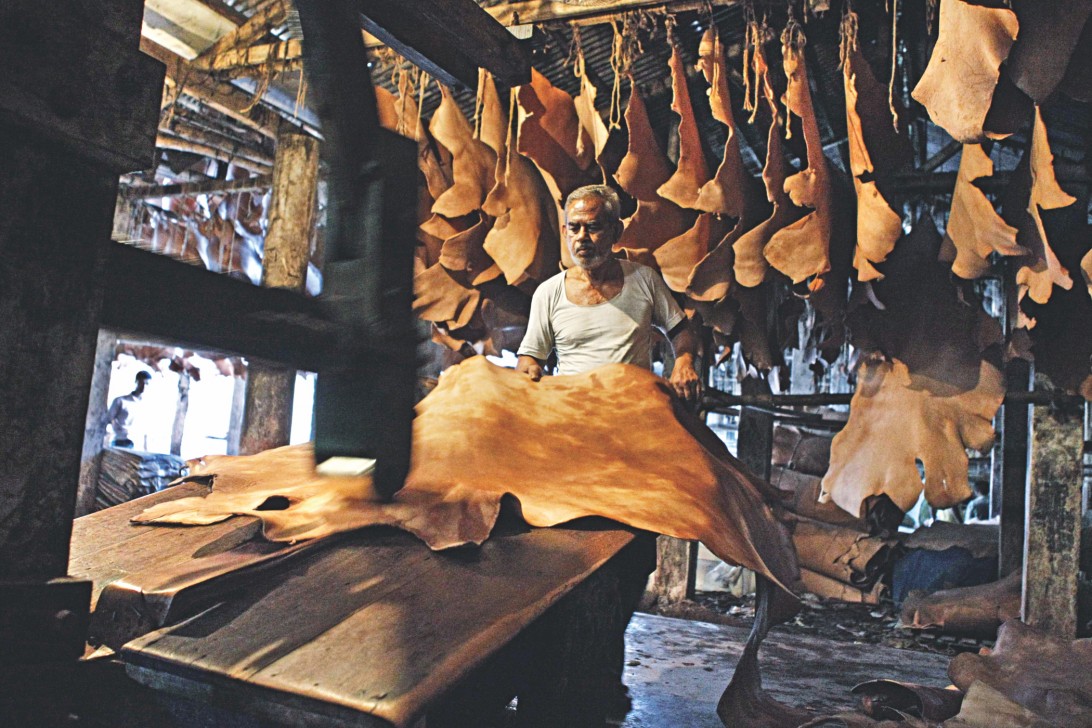Tanners long way off LWG certification

The Savar Tannery Industrial Estate (STIE) and the tanners are still a long way off from meeting the requirements of the vital Leather Working Group (LWG) certification although the audit team of the global compliance certification body is scheduled to visit Bangladesh within two months.
The LWG is the global body for compliance and environmental certification in the leather and leather goods sector.
The central effluent treatment plant (CETP) at the STIE cannot be made fully functional to international standards yet, although the construction of the project started in 2014 and was scheduled to be completed by 2017.
Now, Bangladesh is targeting the lowest-graded bronze certification from the LWG, said Jitendra Nath Paul, project director of the STIE.
For the bronze certification, the STIE will have to obtain at least 65 out of 100 marks, for silver 75 and for gold 85 or above, according to experts.
“With the current status of compliance, the STIE might not be able to obtain even the bronze certification as we need to improve some things,” Paul said.
If the STIE can set up the automated monitoring system, install water-flow metres in all tanneries for reduction of water consumption and technology for de-watering sludge, better sludge management and improvement of approach road, it may get some extra marks, he said.
“If we can perform these tasks, we are hopeful that we will obtain the bronze certification. Once we get the bronze, we will start working to obtain the silver and gold certification.”
Although Paul is hopeful about the improvement of the STIE and sludge management by December, he is doubtful about the improvement of compliance by the tanneries by the stipulated time.
For instance, among many factors, the tanneries will have to reduce water consumption by almost half during washing of rawhide for tanning purposes by December.
Currently, Bangladeshi tanners consume 65,000 litres of ground water for washing a tonne of rawhide, which is the highest water consumption globally.
The local standard for water consumption for washing a tonne of rawhide is 30,000 litres and the international standard is 25,000 litres.
So far, water flow metres have been installed only in 68 out of 155 tanneries, he said.
“This is a simple example and the tanneries will have to comply with many more issues to obtain any kind of LWG certification.”
The certificate is mandatory to gain market access to Europe, the US and some developed Asian countries.
In the absence of the certification, Bangladesh leather exporters ship their goods to mainly China at 40 percent lower prices, according to industry insiders.
“We have warned the tanneries that they will be shut down if they do not improve their compliance substantially before the visit of the LWG audit team,” Paul added.
Md Shaheen Ahmed, president of the Bangladesh Tanners Association, said they have been running mock tests in some tanneries now to verify their readiness for the certification. However, the tanneries are running their business by maintaining other compliance and environmental standards like ISO, Ahmed said.
“We have some limitation about technological know-how related to compliance for obtaining the LWG certification.”
The mere obtaining of the LWG certification will not guarantee better prices, Ahmed said, adding that Bangladesh needs to improve its negotiation skills and develop markets and products.
Delwar Hossain, team leader of the CETP, said currently he and his team are working to improve the chrome recovery from waste water so that the water is treated better.
Once the water is treated well, it can be discharged into the nearby river easily, said Hossain, who is also a teacher of the civil engineering department of the Bangladesh University of Engineering and Technology.
“Our target is to treat the waste water of the CETP in such a way that the fish can swim in the water. Swimming of fish in the treated water indicates better treatment of water and it will also affect the water of the river if it is discharged.”
